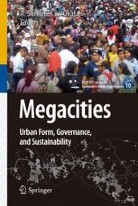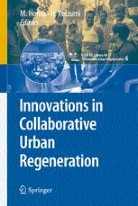
About this book series
By the process of urban development in the 20th century, characterized by suburban expansion and urban redevelopment, many huge and sophisticated complexes of urban structures have been erected in developed countries. However, with conventional technologies focused on the construction of structures, it has become difficult to keep urban spaces adaptable to environmental constraints and economic, social and cultural changes. In other words, it has become difficult for conventional technologies to meet social demands for the upgrading of social capital in a sustainable manner and for the regeneration of attractive urban space that is not only safe and highly efficient but also conscious of historical, cultural and local identities to guarantee a high quality of life for all. Therefore, what is needed now is the creation of a new discipline that is able to reorganize the existing social capital and the technologies to implement it.
For this purpose, there is a need to go beyond the boundaries of conventional technologies ofconstruction and structural design and to integrate the following technologies:
(1) Technology concerned with environmental and risk management
(2) Technology of conservation and regeneration with due consideration to the local characteristics of existing structures including historical and cultural resources
(3) Technologies of communication, consensus building, plan making and space management to coordinate and integrate
the individual activities initiated by various actors of societyUp to now, architecture, civil engineering, and urban engineering in their respective fields have, while dealing with different time-space scales and structures, accumulated cutting-edge knowledge and contributed to the formation of favorable urban spaces. In the past, when emphasis was put on developing new residential areas and constructing new structures, development and advancement of such specialized disciplines were found to be the most effective.
However, current problems confronting urban development can be highlighted by the fact that a set of optimum solutions drawn from the best practices of each discipline is not necessarily the best solution. This is especially true where there are relationships of trade-offs among such issues as human risk and environmental load. In this way, the integration of the above three disciplines is strongly called for.
In order to create new integrated knowledge for sustainable urban regeneration, the Center for Sustainable Urban Regeneration (cSUR), The University of Tokyo, was established in 2003 as a core organization of one of the 21st Century Centers of Excellence Programs funded by the Ministry of Education and Science, Japan, and cSUR has coordinated international research alliances and collaboratively engages with common issues of sustainable urban regeneration.
The cSUR series are edited and published to pr
esent the achievements of our collaborative research and new integrated approaches toward sustainable urban regeneration.- Electronic ISSN
- 1865-8512
- Print ISSN
- 1865-8504
Book titles in this series
-

-
Advanced Monitoring and Numerical Analysis of Coastal Water and Urban Air Environment
- Editors:
-
- Hiroaki Furumai
- Shinji Sato
- Motoyasu Kamata
- Kazuo Yamamoto
- Copyright: 2010
Available Renditions
- Hard cover
- Soft cover
- eBook

-
Sustainable Urban Transport in an Asian Context
- Editors:
-
- Hitoshi Ieda
- Copyright: 2010
Available Renditions
- Hard cover
- Soft cover
- eBook

-
Innovations in Collaborative Urban Regeneration
- Editors:
-
- Masahide Horita
- Shinichi Koizumi
- Copyright: 2009
Available Renditions
- Hard cover
- Soft cover
- eBook

-
Groundwater Management in Asian Cities
Technology and Policy for Sustainability
- Editors:
-
- Satoshi Takizawa
- Copyright: 2008
Available Renditions
- Hard cover
- Soft cover
- eBook

